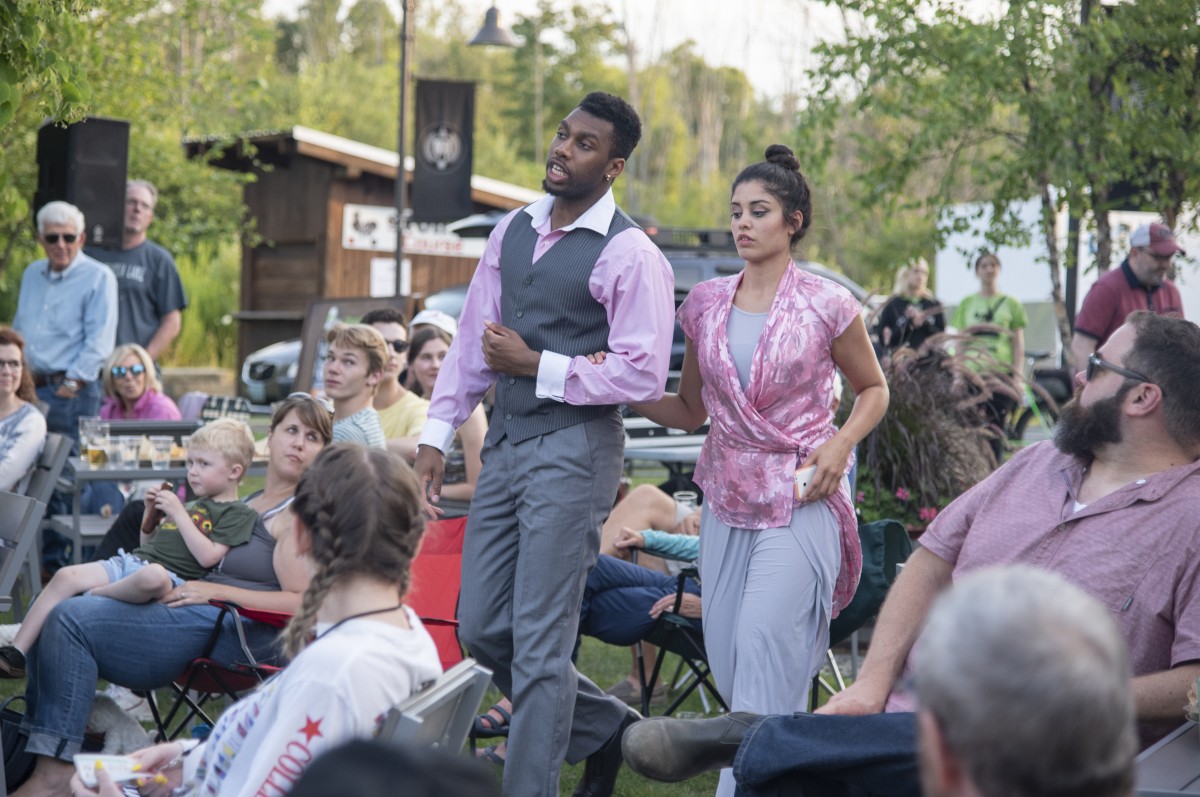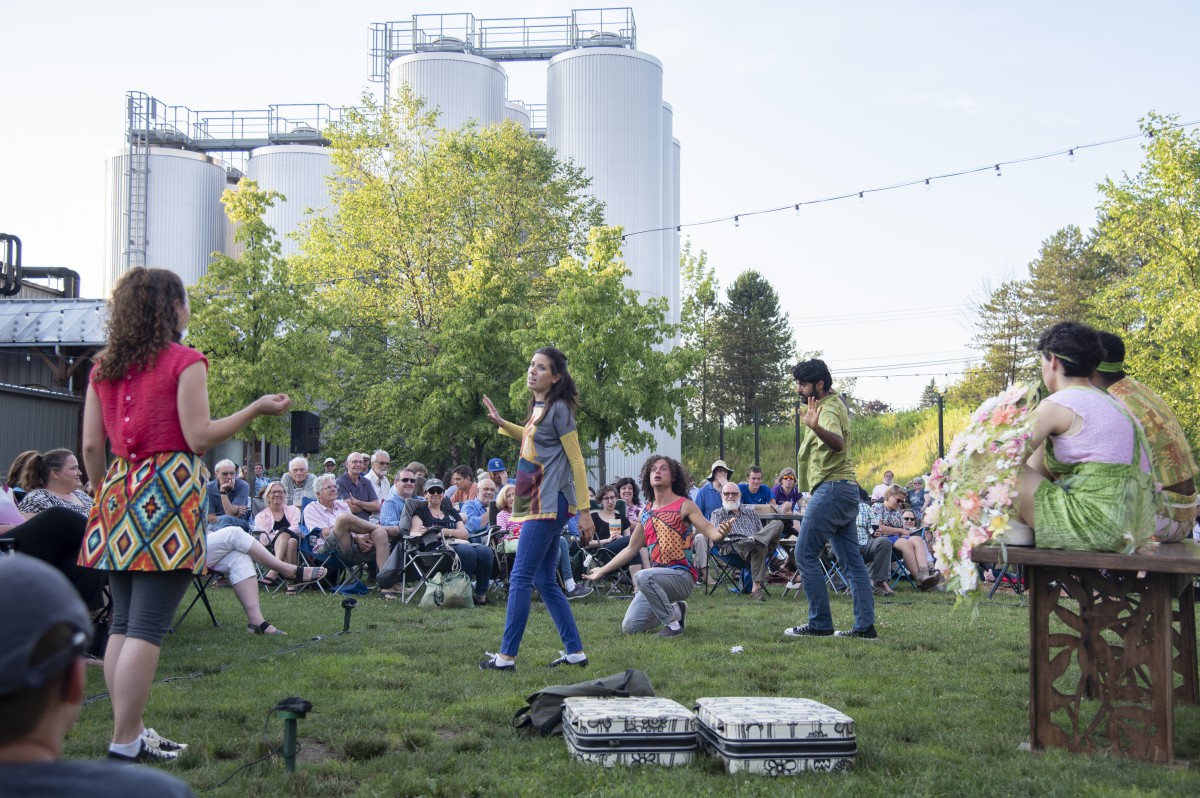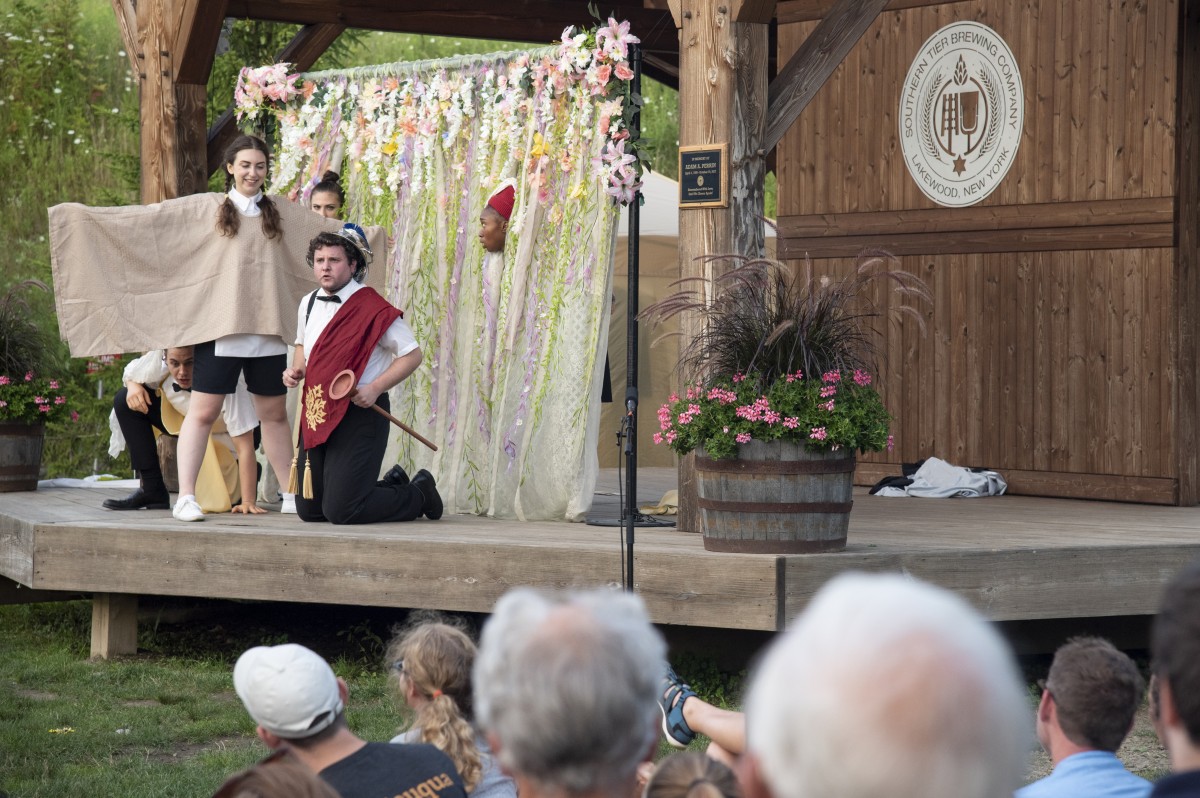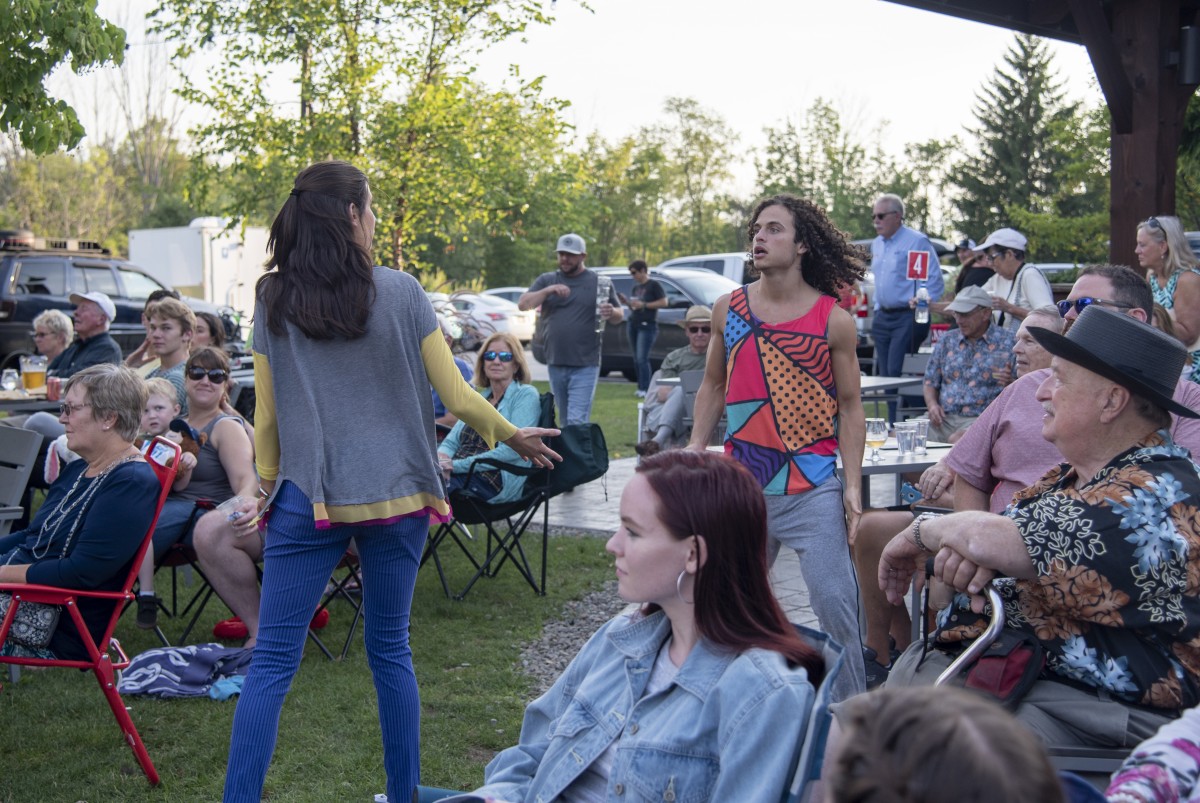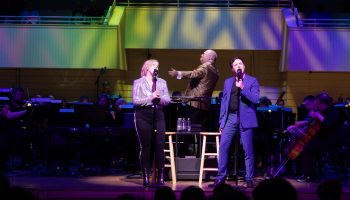Guest Critic: Anthony Bannon
It was in the eyes. They led the way and subtly stole the show, casting far more than a glance. These were quick eyes. They said it all.
It could have been in the words, because they were Shakespeare’s after all, and the play was A Midsummer Night’s Dream, in a very live adaptation by the nationally regarded Jeff Whitty (Tony Award for Avenue Q).
And it could have been the place, which was novel — the Southern Tier Brewing Company, the last of the free locations graced by the Conservatory of the Chautauqua Theater Company, also including sites in Jamestown, Mayville and Bestor Plaza — all outside, just where this play needs to be.
A Midsummer Night’s Dream counter-poses the culture of a rule-bound, walled-in, controlled location (Athens) with the nearby forest where the rules are off and fairies reign, particularly at night and especially on the eve of May Day, the festival celebrating a newly flowering life of the season and the fertility of love that goes with it.
In the woods, the play has an all-out joyfulness, employing pagan ritual, vaudeville humor, downright verbal and physical gibberish: A wild riskiness of chases around the audience and the taking of several flights into colleagues’ arms.
Back in Athens it is all starch, grounded by stilted formal dress and consultations into the civic rule book.
In his Dream, Shakespeare created an auger of the Beat era, still ongoing, a recognition that significant change does not happen out of a rule book. Change occurs out in the woods illuminated by a full moon, where the rules are off and the rug is ready to be pulled out from under, and the apple cart prepared for tipping. It is time for transgressions.
Look to the eyes for their vision. O, them eyes.
Sarah Elizabeth Wansley, the company’s staff artistic producer, directs this production. She lets it fly. Center stage, it is hells-a-popping. But around the center, everyone is also on-point. Everyone is as if at the center, and director Wansley does it with the eyes especially: Eyes gathering information and making rue comment to complete and extend a communication loop. It works like a song. There are the “Eyes of the Tiger,” “Hungry Eyes,” “Far Away Eyes,” “Angry Eyes” and even “Bette Davis Eyes.” Everyone is called out, particularly those living dangerously at the center: congratulated, criticized, mocked, or corrected — with plenty of room for cross-comment.
It is great fun to watch; these young actors with faces more alive than words.
The play is easy enough. Names may be difficult to get straight, so ignoring names: There are three couples in various stages of marital commitment with various reasons for showing up on May’s eve in a forest supercharged for fecundity. Well, that is a polite way of saying it.
Director Wansley pulls off the real truth of the matter for an age-mixed audience sitting on blankets or folding chairs, and it is a subtle, though pervasive, sexiness — a giggle for youngsters, but for adults, not far from Lenny Bruce or Mort Sahl, raunchy comics from the Beat era, brought to trial for their jokes 60 years ago. Though theirs were words, and this is mostly body language and eyes.
This is a sexy night, guided by sprites and fairies, and by a group of caterers seeking solitude to practice a ribald play. That play becomes a play within a play, which, as with Hamlet, tells the true meaning, and here it is that when the rules are off, change will happen — on a personal level and on a civic level.
Witty, the writer, and Wansley, the director, have arranged a parallel with the 1967 Summer of Love, and on the hill beyond the performance area, a group of men, not a part of the production, played an odd-looking game at the edge of the forest. A sunny evening, thunder in the distance, mead on the terrace and cards with Shakespearean drinking games readied on-coming night’s dreams.
Witty and Wansley begin and end the play with caterers and sprites performing a doo-wop excerpt from Hall & Oates’ “You Make My Dreams” — a message of sorts to the three couples that the recognition of love — or other matters — is often right in front of you: “What I want, you’ve got it …” Other popular tunes are sprinkled through the night, with music direction by Tommy Crawford, from New York. Characters make their own comments in dress, a tie-dyed shirt for one, a pop art image for another, a Jimi Hendrix vest for another. Flowers abound. Flower power in the set, costumes and as a ring, costumes by Dixon Reynolds, who also teaches at SUNY Fredonia and works theater in Buffalo and afar. Set design by Jill Davis, a pop-up variant.
This Dream is clearly a conservancy effort, a group of young actors making the bridge from school and internships to the professional stage. They are ready, and they are fine: Kieran Barry, Alex Brightwell, Kelsey Deroian, Rishan Dhamija, Elizabeth Erb, María Gabriela Rosado González, Amara Granderson, Kayla Kearney, Alexander De Vasconcelos Matos, Sofia Bunting Newman, Courtney Stennett and Titus VanHook. Bravo. Brava.
Anthony Bannon is the former director of the Burchfield Penney Art Center at SUNY Buffalo State and of the George Eastman Museum in Rochester. He was a staff critic for The Buffalo News. A Buffalo launch for his new book with Damiani Editore, Portraits: William Coupon, will be held with the artist Sept. 26 in the Burchfield Penney.



